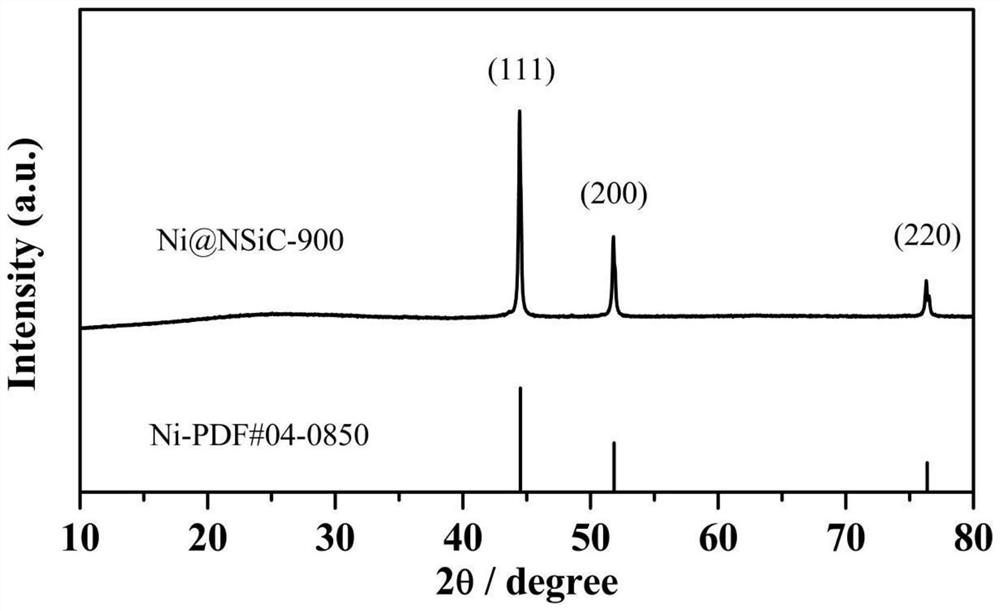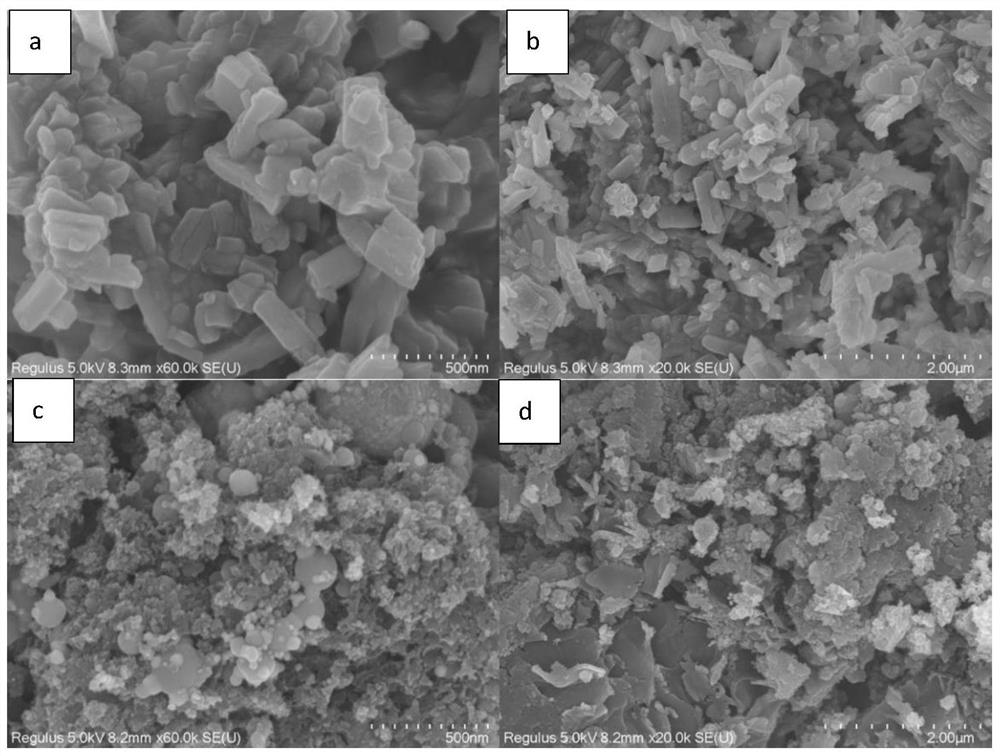Enzyme-free glucose sensor, production method and application thereof
A glucose sensor and glucose technology, applied in the field of glucose detection, can solve the problems of detection result error, slow response of electrode materials, etc.
- Summary
- Abstract
- Description
- Claims
- Application Information
AI Technical Summary
Problems solved by technology
Method used
Image
Examples
Embodiment 1
[0041] An enzyme-free glucose sensor based on biomass composite nano-electrode material Ni@NSiC and its detection method, the steps are as follows:
[0042] Put the washed and dried Magnolia leaves into the high-temperature tube furnace N 2 (0.5L / min) atmosphere, calcined at 600°C for 2 hours to make biochar, and set aside;
[0043] Put 0.04g, 0.5M / L hydrochloric acid treated biochar, 0.2542g pyromellitic acid, 0.2569g nickel acetylacetonate, 5ml N,N-dimethylformamide in 10ml ethanol / ultrapure water (1:1 ) in the mixed solution and stirred for 30min to obtain mixed solution A;
[0044] Transfer the mixed solution A to the CEM microwave synthesis instrument for reaction. The reaction conditions are: reaction temperature 180°C, reaction time 2h, microwave power 200W, and the mixed solution precursor B is obtained after the reaction is complete;
[0045] Pour the cooled mixture precursor B into a centrifuge tube, wash, centrifuge, and dry to obtain product C;
[0046] The prod...
PUM
 Login to View More
Login to View More Abstract
Description
Claims
Application Information
 Login to View More
Login to View More - R&D
- Intellectual Property
- Life Sciences
- Materials
- Tech Scout
- Unparalleled Data Quality
- Higher Quality Content
- 60% Fewer Hallucinations
Browse by: Latest US Patents, China's latest patents, Technical Efficacy Thesaurus, Application Domain, Technology Topic, Popular Technical Reports.
© 2025 PatSnap. All rights reserved.Legal|Privacy policy|Modern Slavery Act Transparency Statement|Sitemap|About US| Contact US: help@patsnap.com



